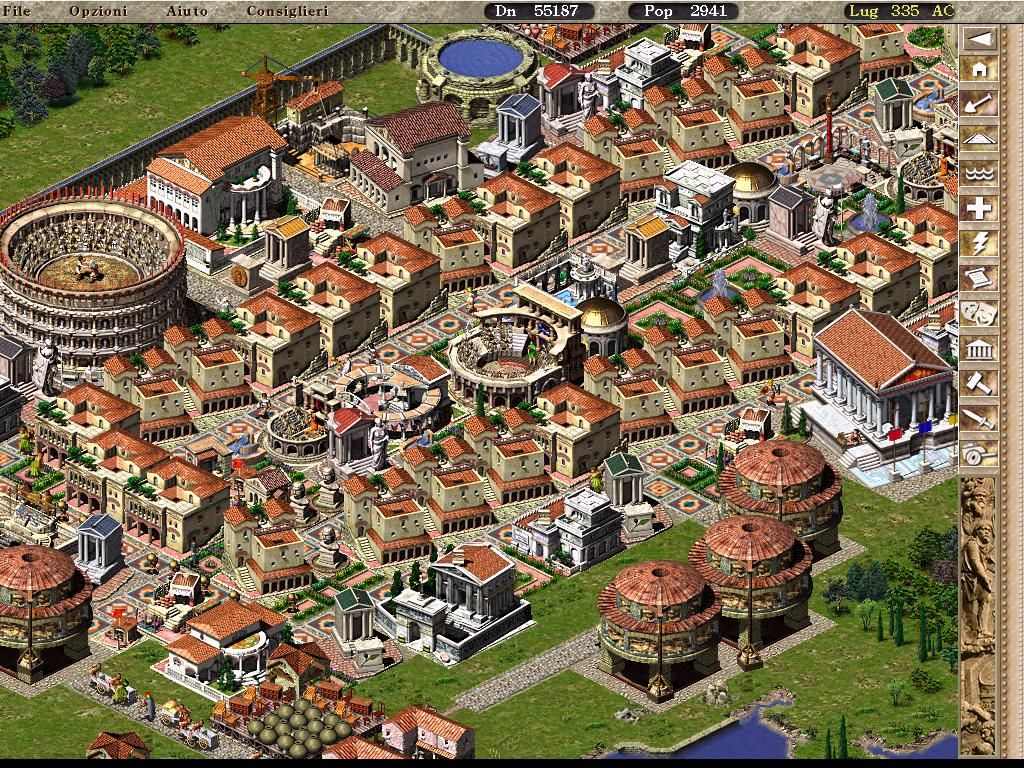

In Caesar III, all actions occur on a single map, in contrast to the province and city maps of its predecessor. Caesar III features significant changes to its predecessor, Caesar II. Players are required to manage several interconnected supply chains in order to sustain the growth of their city, which increases as more needs are met, including the supply of water, food, religious services, entertainment, education, and health. Buildings are selected from an interface under submenus categorized by building type. Gameplay in Caesar III involves the construction of cities on a map displayed in a two dimensional isometric perspective.

Military assignments include the risk of enemy invasion, whilst peaceful assignments contain more stringent requirements for victory, and additional challenges including earthquakes, fires and other hazards. Players are given a choice at the beginning of each assignment to play a map that is 'peaceful' or 'military'. Assignments are set over time in historical Roman cities, such as Brundisium and Londinium. The Career mode of Caesar III follows a series of branching assignments requiring players to construct cities of increasing size and complexity. In 2016, the game had a remaster released on steam, supporting the game up to Windows 10.Ĭaesar III features two modes of play: 'Career', in which players follow a progression of assignments of increasing difficulty with conditions for success, and the 'City Construction Kit', an open-ended mode without victory conditions. Players assume the role of a provincial governor to build thriving cities across the Roman Empire, in which they must ensure their citizens have their needs met, and deal with various disasters, angry gods and hostile enemies.

It is the third installment of the Caesar series of games and is part of Sierra's City Building series. Caesar III is a city-building game released on September 30, 1998, for Microsoft Windows and Mac OS, developed by Impressions Games and published by Sierra On-Line.


 0 kommentar(er)
0 kommentar(er)
